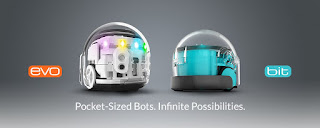THE SNAPINO - An introduction to the Arduino and data collection

One feature of the Arduino board is that it does so much and there are so many possible projects, it's a bit intimidating. For younger or newer programmers, a good introduction to the Arduino is through the Snapino Snap Circuits kit. The Snapino links Snap Circuits components to an Arduino. The set is relatively inexpensive (about $50.00) and is available on Amazon.com. The Arduino is mounted on a Snap Circuits adapter and can easily be plugged into any Snap Circuits project. An Arduino board and several Snap Circuits blocks, including a light sensor, are included. The project below, taken from the Snap Circuits manual included with the kit, is for a simple light monitor. The manual provides clear, helpful instructions for building the circuit, downloading the software, and running the program. The program and the circuit setup are well-documented. And, since students have access to ...



